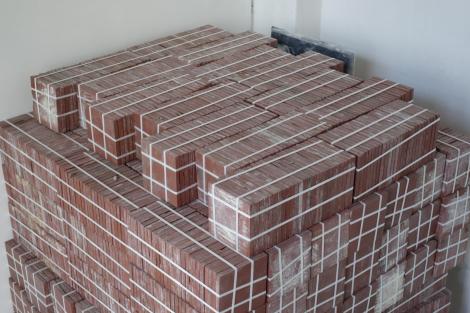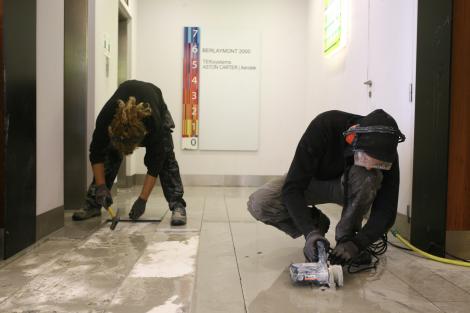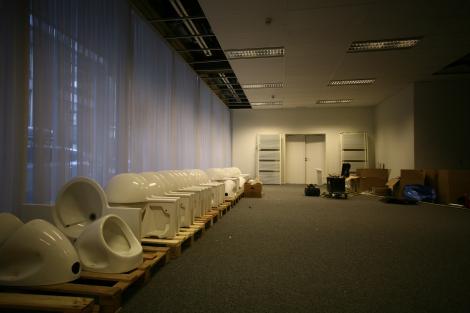Rotor DC: reuse made easy
In 2013, after many years of research on the flows of materials within the industrial economy, and on the possibilities of reusing them; and after a long inquiry into the existing reclamation industry, Rotor felt ready to launch a more applied approach to salvage and reuse in the Brussels-Capital Region. Between 2013 and the 2016, Rotor hosted the first experiments of what would become the RotorDC (or Rotor Deconstruction) project: a pioneering approach to salvage building components from the metropolitan built environment.
Early experiments involved dismantling diverse components from large demolition sites (such as the Générale de Banque interiors in Brussels) and learning how to condition them for reuse—including setting up the infrastructure to store them and connect with potential clients.
In December 2016, RotorDC became a separate entity organised as a cooperative company. Since then, RotorDC has continued to develop innovative ways to salvage building elements, and has become a major actor in the Brussels building materials reuse economy.
Although they are now two distinct organisations, Rotor and RotorDC are still pretty much connected. For instance, Rotor followed RotorDC in their journey through different locations in Brussels (in Anderlecht between 2017 and 2022, and in Evere now). Both structures regularly exchange know-how, findings and ideas. Rotor's offices are now located literally above RotorDC's stocks of salvaged materials. This situation provides unique opportunities when it comes to sourcing materials for specific design projects. It is also the best position one can dream of to get a good understanding of the challenges raised by reuse.
In exchange, the work carried out by Rotor to promote the uptake of salvage and reuse practices at a larger scale (through research, assistance to contracting authorities and policy-makers, training schemes and raising awareness on reuse in general) is meant to benefit entities like RotorDC and all the similar organisations who are developing the actual value chains for reusing building materials.
















